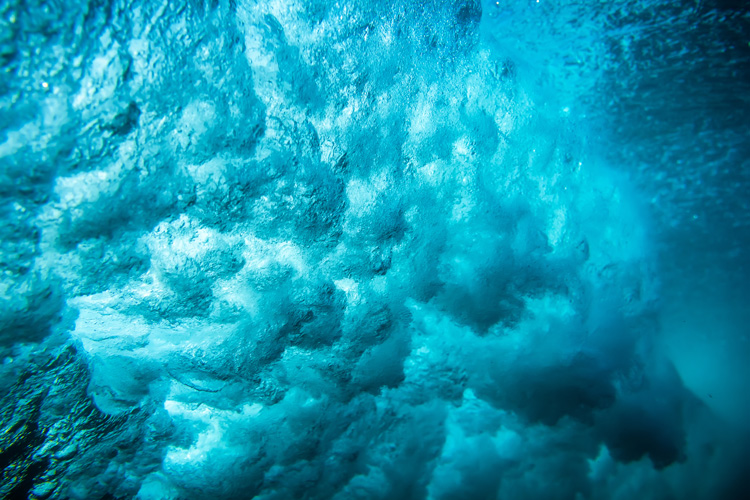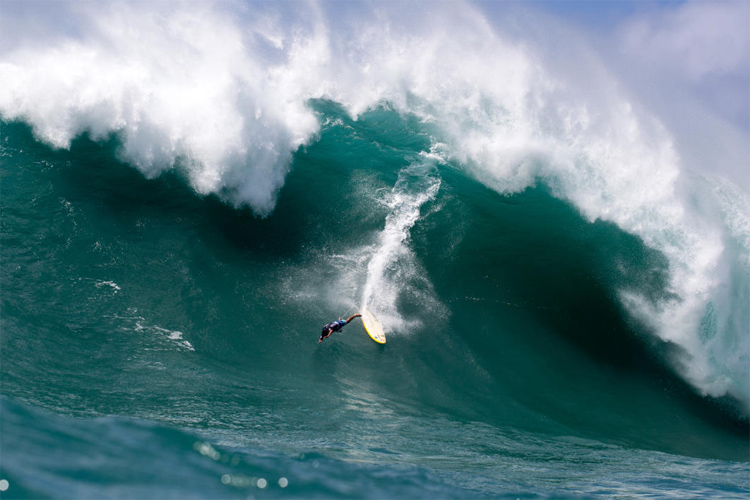Apnea training simulates real-life situations that can occur in the surf zone. Discover why staying calm when caught inside will help you handle three-wave hold-down experiences.
It's fair to say that we only breathe because the CO2 levels in our bodies increase.
Have you ever felt a burning sensation in the chest during a horrendous wipeout? Well, that's precisely what the urge to breathe is.
Surfers need to stay alert all the time, but they don't usually dedicate enough attention to breathing. They're often more focused on the breaking of the waves.
But it's time to take a look at how we breathe and avoid blackouts that will put lives at risk.
What is apnea? Apnea is the temporary suspension of breathing. It is a technique used by freedivers to attain great depths on a single breath.
Apnea involves qualified training and can be dangerous when performed without professional supervision.
Big wave surfers and average wave riders are getting more and more acquainted with the benefits of apnea training.
Why? Because it helps them deal with hazardous ocean conditions, surrounded by huge masses of water that will push them down, spin, and even throw them up in the air.
Is apnea good for you? Yes, it is, especially if you're a surfer who enjoys a few sessions in overhead wave conditions.
But it can also be helpful for weekend warriors who, once in a while, are forced to cope with a sneaky set wave.

Mind and Body
The ultimate goal of underwater apnea training is to keep you calm, relaxed, and slow while using an increased and strengthened lung capacity.
But breath-holding techniques can also work out your mind.
A meditative state will make your body consume less oxygen than when you're in a hyperactive and hypervigilant state.
And if you add up a greater oxygen power, it translates into higher comfort levels in tricky situations. That's why freediving has a lot to share with surfing.
There are several apnea courses for surfers.
They're designed and run by professional deep-sea divers or seasoned big-wave surfers with decades of experience in extreme ocean conditions.
A surf survival training course will help you increase your breath-hold to up to three or five minutes by teaching you the techniques and the theoretical basis (equalize ears, CO2 training tables), simulating three-wave hold-downs, and performing underwater weight walks, as well as dry and wet statics.
Every person has their own limits, but you'll be amazed by what you can accomplish in less than a month.
Managing your oxygen in the big surf is more than a matter of comfort.
Sometimes, it's a matter of survival, so these apnea training programs will definitely surprise you.
There are around 12 apnea disciplines.
The most popular breath-holding activities are static apnea, dynamic apnea with and without fins, constant weight apnea with or without fins, and free immersion apnea.
You can train static apnea by yourself in a swimming pool, but make sure you have someone around you in case anything wrong happens.
